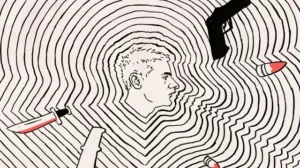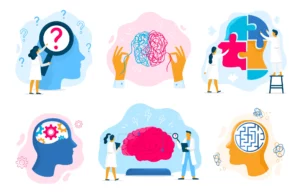If you are one of the many people who suffer from harm OCD, then you know how debilitating it can be. This type of OCD often causes a person to worry about causing physical or emotional harm to themselves or others. It can be very difficult to live with this condition, but there is help available. In this blog post, we will discuss treatment options for harm OCD and how you can ace recovery.
Contents
Defining Harm OCD

Harm OCD is a subtype of OCD that is characterized by intrusive thoughts, images, or impulses that cause the sufferer to worry about causing harm to themselves or others. These thoughts are often accompanied by intense anxiety and fear. People with harm OCD may go to great lengths to avoid anything that they believe could trigger their fears. For example, someone with this condition may avoid sharp objects or situations where they could potentially hurt someone else.
It’s not uncommon for people to have a thought about harming someone, even if they don’t want to. What makes harm OCD a problem is when you take these thoughts (or impulses or images) to be a dangerous sign. In other words, you interpret the thought to mean that you’re likely to act on it.
Signs Of Harm OCD

There are some common signs and symptoms that are associated with harm OCD. If you have this condition, you may:
- Constantly worry about harming yourself or others
- Have intrusive thoughts or images about harming yourself or others
- Avoid people or situations that you believe could trigger your fears
- Engage in repetitive and compulsive behaviors, such as checking or washing, to try to relieve your anxiety
- Experience a great deal of distress and anxiety about your thoughts and fears
- Avoid people or places where you could potentially harm yourself or others
- Feel the need to perform certain rituals or compulsions to prevent harm
It is important to know that mental health condition symptoms manifest in different forms and intensities for different people. While these are just a few common indicators, if you notice yourself or someone around you going through something similar, please reach out to a professional for timely diagnosis and early intervention before things get out of hand.
Treatment Options

There are several different treatment options available for harm OCD. Some can be done by an individual or require guidance from a mental health professional.
Therapy
- Cognitive-behavioral therapy (CBT) is an effective treatment for harm OCD. This type of therapy helps you to identify and challenge the negative thoughts and beliefs that are causing your anxiety. CBT can be done on an individual or group basis.
- Exposure and response prevention (ERP): ERP is a type of CBT that involves exposing yourself to your fears in a safe and controlled environment, without engaging in your usual compulsions or avoidance behaviors. This can help you to learn that your fears are not real and that you can cope with them without resorting to your previous anxieties.
Medication
Several different medications can treat OCD. These include antidepressants, anti-anxiety medications, and antipsychotics. Medication can be used alone or in combination with therapy.
Medication can be used to help reduce the anxiety and distress that are associated with harm OCD. Selective serotonin reuptake inhibitors (SSRIs) are a type of antidepressant that is often prescribed for this condition.
NOTE: it is important to have a valid and legal prescription to access psychiatric drugs. It is also important to keep in touch with your doctor to talk about your benefits, side effects, and effectiveness.
Self Help Tips
There are several things that you can do to help yourself if you suffer from harm OCD. These include:
Practicing relaxation techniques: Relaxation techniques, such as deep breathing or meditation, can help to reduce your anxiety.
Learning about your condition: The more you know about harm OCD, the better equipped you will be to manage it. There are several excellent resources available that can provide you with information and support.
Identifying your triggers: Pay attention to what situations or activities trigger your fears and anxiety. Avoiding these triggers can help to reduce your symptoms.
Challenging your thoughts: When you have intrusive thoughts about harming yourself or others, try to challenge them. Ask yourself whether there is any evidence to support these thoughts. remind yourself that just because you have a thought, doesn’t mean it’s true.
Getting support: Support from family and friends can be invaluable when you are dealing with harmful OCD. There are also several online and offline support groups available that can provide you with additional support.
If you think you may suffer from harm OCD, it is important to seek professional help. This condition can be very distressing and debilitating, but there is treatment available that can help you to manage your symptoms and live a full and satisfying life. Remember, you are not alone in this journey – there is help out there. With the right treatment and support, recovery from OCD, just like any other psychiatric disorder, is possible.
Conclusion
If you are struggling with harm OCD, know that you are not alone. This is a very common condition that affects people of all ages and backgrounds. Thankfully, there are effective treatment options available that can help you manage your symptoms and live a fulfilling life. If you think you may have this condition, reach out to a mental health professional for help. Mantra Care has affordable and accessible psychological assistance from all over the world at affordable rates.
If you are looking for affordable Online OCD Counseling MantraCare can help: Book a trial OCD therapy session


